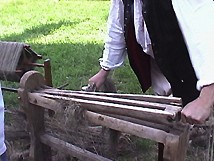 |
|
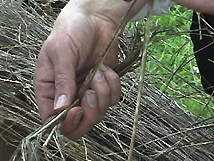 |
| After soaked (or retted)
flax has dried, the stem is cracked on a tool called a flax break. Small
bundles of flax are placed across the lower wooden blades; the upper blades
break the outside chaff. |
|
The inner soft fibers
are the part of the plant used for the fabric. |
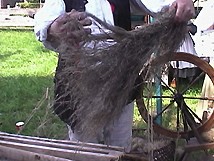 |
|
 |
| Once the flax has been
worked on the flax break it is flexible. |
|
The scutching knife is
struck against a vertical wooden board to remove the loose pieces of stem
from the fiber. |
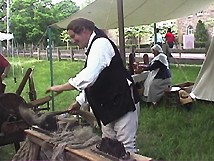 |
|
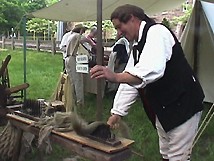 |
| A comb (or hatchel) separated
the long fibers and removed the short ones. The short fibers (or tow)
were used for bags and ropes. |
|
Fibers from the finer comb
(or hatchel) were used for work clothes. Skill is required to avoid cutting
the fingers on the spikes of the comb. |
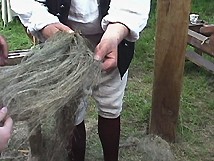 |
|
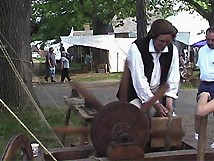 |
| After combing the hatchelled
flax, the long fibers are very soft. |
|
This foot powered machine
turns a wheel; the spokes of the wheel beat the fibers as they are clustered
in a bundle. |
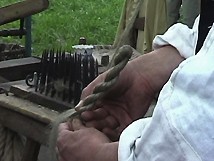 |
|
 |
| A twist is made from
the bundle of fibers by turning one end over the other (almost like making
a rope). A twist is made to store the fibers for winter spinning. |
|
This set of twists is
from a Lehigh County, PA farmhouse in the year 1843 shows the durability
of the fibers. At that time the canals brought cheap fabric at 7 to 12
cents a yard. The twists were not thrown out by the German farmer. |









